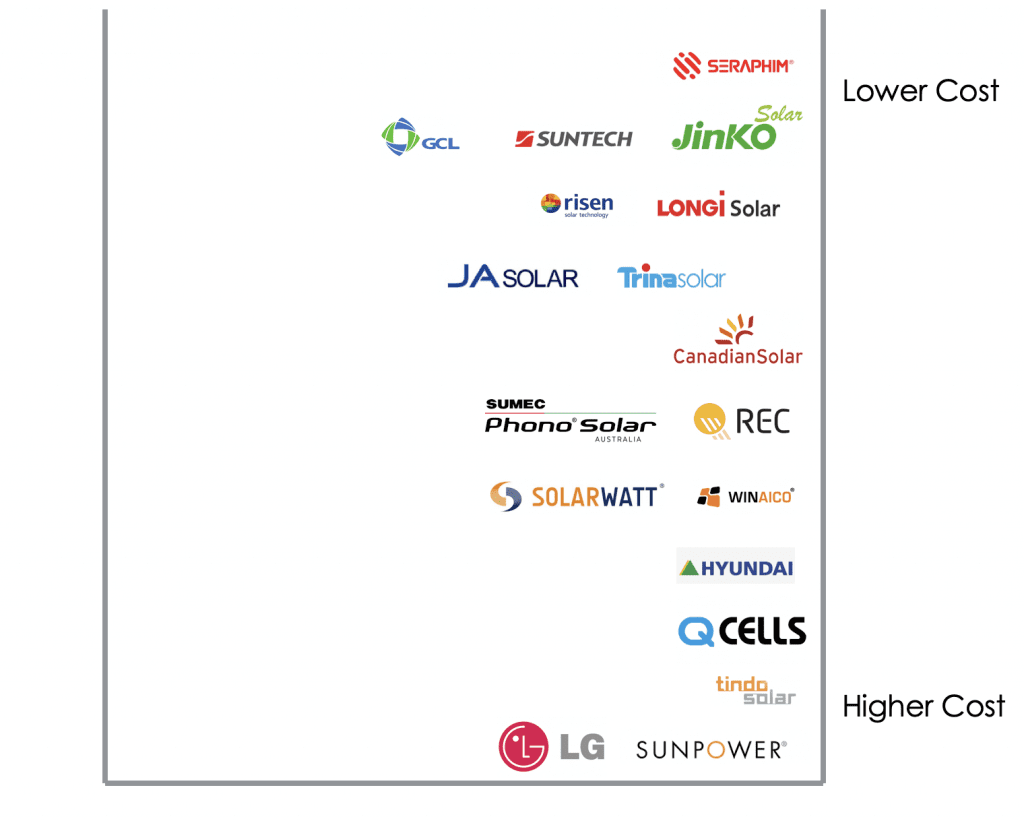Are Trina Solar panels any good?
At GI Energy we can install any solar panel for your home or business. This means we are able to write honest reviews expressing our genuine opinion, without having to be biased due to holding stock of Trina solar panels, or any other solar panel! This article details the opinion of our Business Development Director, who has worked in various roles from consultancy, business development and commercial project management in the PV industry since 2009.
Warranty and tech support today: 8
Warranty and tech support long-term: 7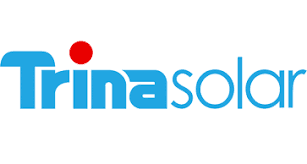
Performance: 7.5
Price: 7.5
Value for money: 8
Total Rating: 7.6/10
Trina Solar panels are one of the world’s largest solar panel manufacturers. Last year, they shipped almost 10GW of solar panels around the world. To put that in perspective, the average size solar system installed for a home in Australia at the time of writing is 7.4kW. There are 1,000kW in 1MW, and 1000MW in 1GW. Trina solar shipped nearly 10GW in 2019!! What that basically means is that Trina Solar shipped enough panels for 1,351,351 home solar installs in Australia! Pretty impressive!
Here is the top 10:
- Jinko Solar– 14.2GW
- JA Solar – 10.3GW
- Trina Solar – 9.7GW
- Longi Solar– 9.0GW
- Canadian Solar– 8.5GW
- Hanwha Q Cells– 7.3GW
- Risen Energy – 7.0GW
- First Solar – 5.5GW
- GCL – 4.8GW
- Shunfeng Photovoltaic – 4.0GW
But, does that mean they are any good? And does that mean you should be installing them for your home or business? The short answer is yes, they are quite good. They offer good value for money, and a solid product. But there is a bit more to it than that…
As usual at GI Energy we like to look at the following criteria when choosing a solar panel:
- Who is the manufacturer and are they going to be able to help with long-term warranty support?
- How will the solar panel actually perform when its installed on my roof?
- How much will it cost me?
So, let’s take a look at the manufacturer:
Trina Solar was founded in 1997, which makes then one of the more mature large Chinese manufacturers. As we already know they are a massive company and are consistently in the top 5 manufacturers worldwide for global shipping volume. Their main factories are based in China, but they do also have facilities in Thailand and Vietnam. Trina do have an office here in Australia (as well as 21 other locations worldwide) which his always a big tick for us.
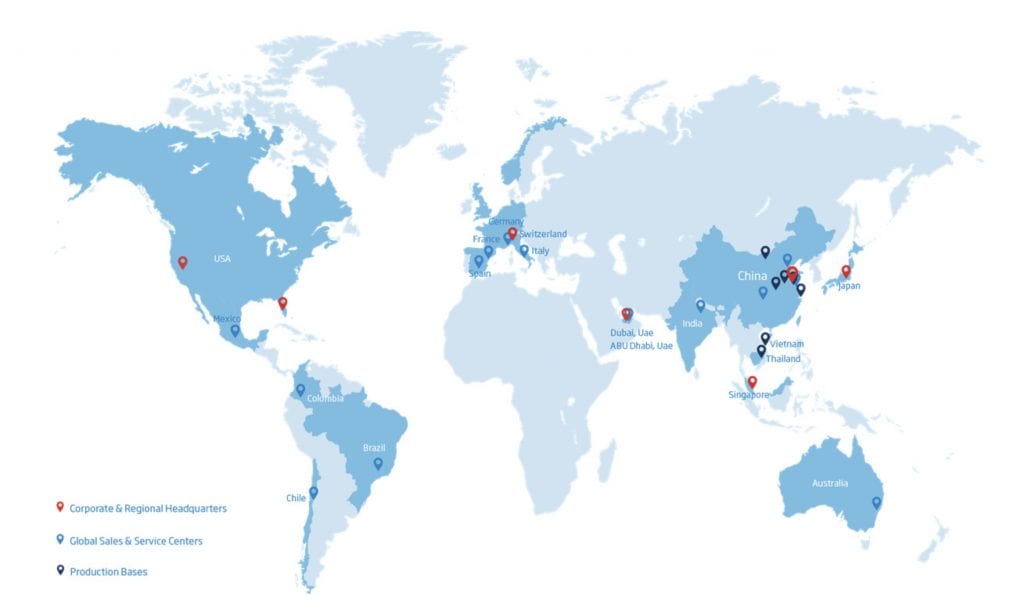
Trina solar panels are also classed as a Tier One manufacturer by Bloomberg New Energy Finance. Please note here though that the “Tier One” classification is a rating based on the financial stability of a solar panel manufacturer, and usually used to show the manufacturers viability for large scale solar farms. So, while this is a good box to tick, it is probably not as important as most seem to promote it as being. Bloomberg are a financial organisation so all they look at is company financials. They are not a solar expert so the Tier One rating should not be confused with a rating that is even remotely linked to solar panel performance. Pretty much every solar panel manufacturer we write about will be rated aa Tier One, and it is a credible achievement, but unless you are approaching your bank and asking them to fund a solar farm, it is probably not that important to you!
That being said, Trina solar do stand out a bit from the crowd of massive Chinese manufacturers, in a good way. When you look at the list of top volume solar panel manufacturers above, most of them fit into the same box – loads of volume, average performing panels, nothing really exciting aside from the scale of the company. We believe Canadian Solar, and Hanwha Q Cells stand out from this crowd most significantly. But Trina also do!
Not only are they a longer serving company than most but they have also been in the Australian market longer than most. They have a good track record for looking after warranty claims, and they offer a good range of panels that deliver a nice balance between performance and value for money.
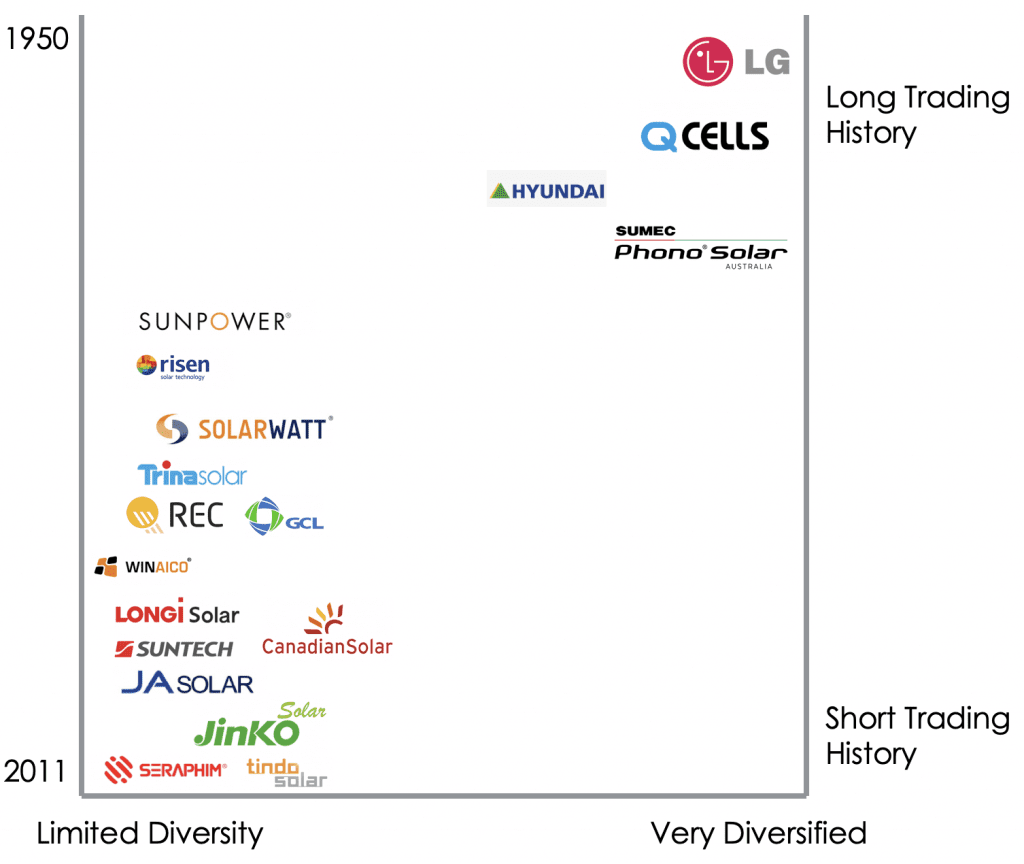
There is slight downside here though:
At GI Energy our preferred solar panel manufacturers are usually backed by large, diverse parent companies. Why? It offers another level of security for consumers. Trina Solar panels are obviously a massive company in the solar industry, but their main revenue stream is solar panels. Year on year, for the last decade, demand solar panel volume globally has increased drastically. This is because the wide-spread use of solar panels is a fairly new industry. But what happens when this volume inevitably starts to dip? Every time we put solar panels on a house, or a solar farm is commissioned, the size of the market basically shrinks. Some of these “panel only” manufacturers will simply not be able to adjust to lower volume. There will be a fight for market share, which inevitably means margins get smaller and smaller and some manufacturers will just not be able to cope. Some will thrive and continue to trade, and others will unfortunately fold. Even as a top five manufacturer if all your eggs are in one basket (solar panel only manufacturer), then you will come across tough times in the future.
If you compare this to LG Solar, Sumec Phono Solar, Hyundia Green Energy or Hanwha Q Cells, who all have many different revenue streams, then common sense would suggest they stand a better chance of being there to support long-term warranty claims if needed.
This prevents us from ranking Trina Solar as a top manufacturer in this category. However, they still rank better than most in the top ten for volume. Largely due to the length or trading, and the fact they manufacture slightly better performing panels than most of the others on that top ten list. Which brings us nicely to our next point:
How well will they perform?
As mentioned above, Trina Solar panels stand out from the crowd of massive Chinese manufactures as they have consistently produced panels that perform well. Most of the large Chinese manufacturers put all their focus on keeping costs down, but Trina have a pedigree for producing efficient cells. They have set several world records over the years for cell efficiency, which is noted most recently with their N-type Mono Cell record. The Trina website reported:
The record-breaking bifacial solar cell was fabricated on a large-sized 244.62 cm2 wafer with a low-cost industrial process of advanced i-TOPCon (Industrial Tunnel Oxide Passivated Contact) technologies, having a front boron emitter and a rear full-area passivating contact. The bifacial solar cell reached a total-area front side efficiency of 24.58%, without using any dedicated aperture during the illumination. This result has been independently confirmed by the ISFH CalTeC in Germany.
“We are very delighted to announce the latest achievement from our research team at the SKL PVST. To the best of our knowledge, this is the new world record for total area efficiency for a large-area two-side contact silicon solar cell”, said Jifan Gao, the CEO of Trina Solar. “The excellent R&D results lays a solid foundation for Trina Solar to provide new differentiated high-end PV modules and solutions to our customers.”
Great to see this type of innovation in our industry! So, what does it mean to you, if you are thinking about buying Trina Solar panels today?
Probably not that much to be honest. This record is from a cell being tested that won’t make it into a solar panel for your roof for at least a year. In addition, Trina make lots of different solar panels: Trina Honey (most popular), Trina Honey Black, Trina Tallmax, Trina Duomax and Trina Duomax twin. The one you will most likely be sold here in Australia is the Trina Honey, which is a good panel, but not a record setter by any stretch.
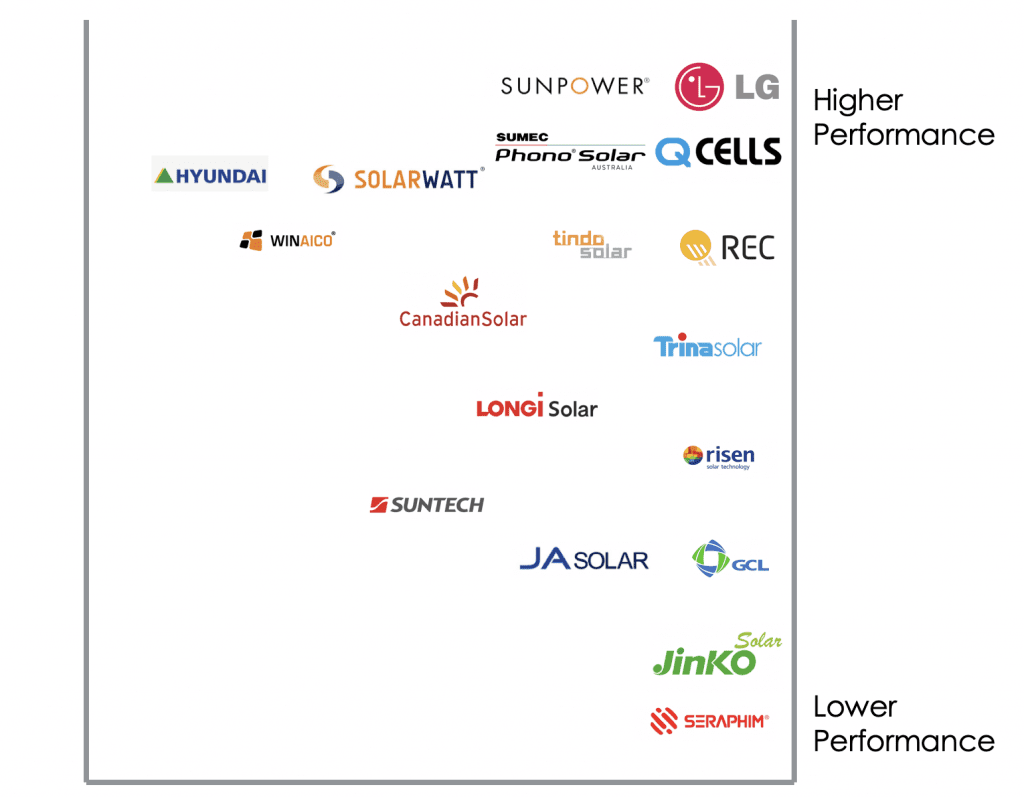
So while Trina clearly push for efficiency more than some other solar panel manufacturers, the real-world data from places like desert knowledge Australia, and our own in house testing, shows that the “average” Trina panel you will most likely be sold here in Australia, will perform better than most large Chinese manufacturers, but they are still not classed as a premium solar panel. At the same time, the “average” Trina panel you will be sold in Australia will also not cost you as much as a premium solar, which brings us to the next category:
How much do they cost?
This panel will sit just above the mid-price point mark when comparing with other reputable solar panel brands. For this price, they do offer good value for money, as they perform better than most around this price point!
Summary:
As mentioned earlier in this article Trina Solar panels do stand out from the crowd of massive Chinese manufacturers as they do pursue (and often hit) efficiency records. They are a slightly below mid-price point panel, and in that regard, you get good value for money as well. We would not class them as a premium solar panel and they are still very much geared towards the cost-effective end of the industry with panels like the Trina Honey, which is by far the most popular.
The only downside here is the lack of diversification from the manufacturer.
So, if you are looking for a solar panel that is very well priced and performs fine, then Trina Honey may be for you! However, if you are looking for a higher performance solar panel and do not mind paying a little bit extra, then have a look at some of the panels closer to the top of the performance chart displayed above.
Here are some links worth checking out:

